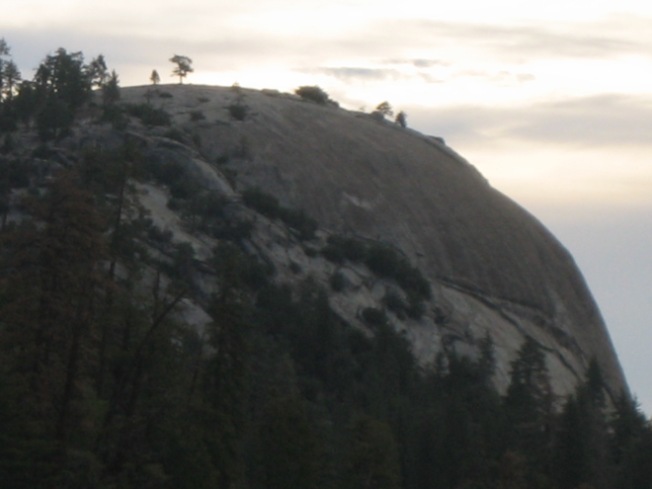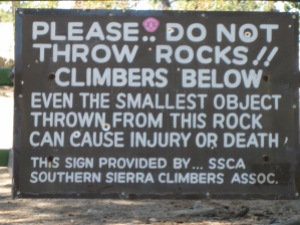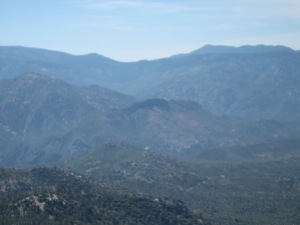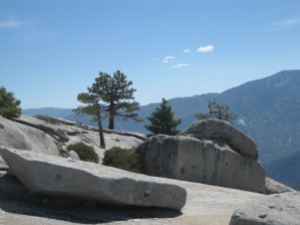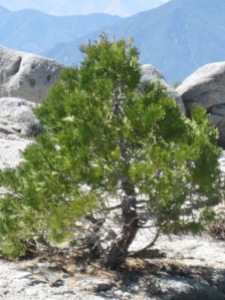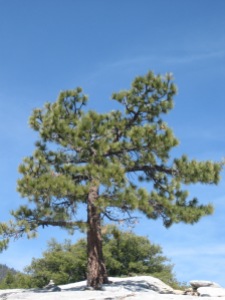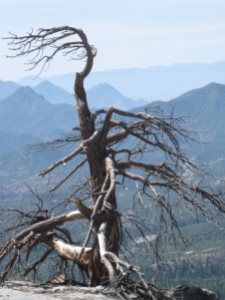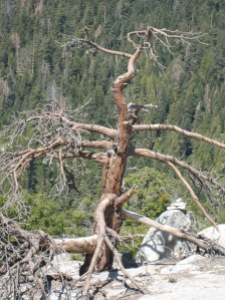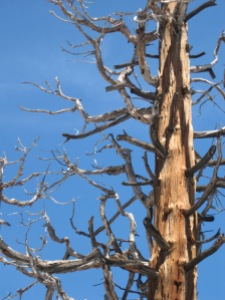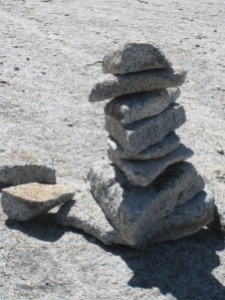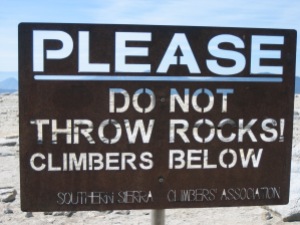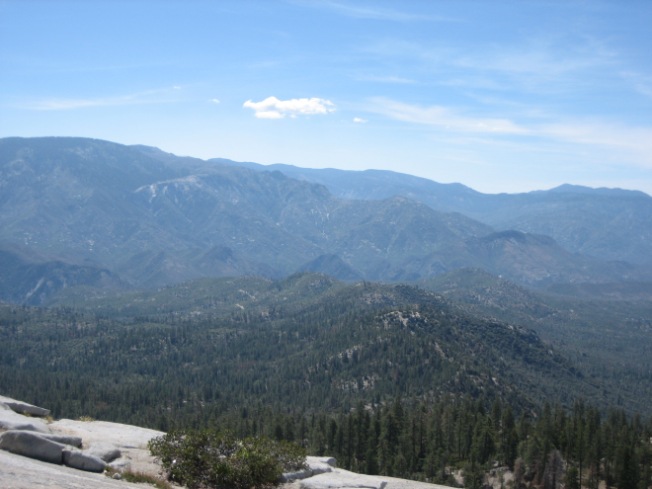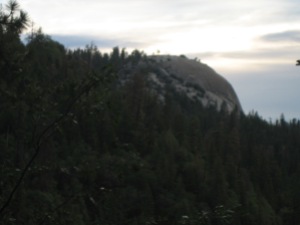Two weeks ago, I wrote about the Bureau of Land Management (BLM) Long-term Visitor Areas (LTVAs) located along the Colorado River in Arizona and California. La Posa (North and South, on either side of Highway 95) is the LTVA closest to Quartzsite, AZ. As I stated in the LTVA post, it costs $180 for a seasonal LTVA permit, good from September 15 to April 15. If you just want to stay at an LTVA for two weeks, you can get a permit for $40. (To learn a whole lot more about LTVAs, read my post about the Long-term Visitor Areas.)

Wait a minute! you may have thought when you read the LTVA post. I heard there was free camping on BLM land near Quartzsite.
Well, you were right about that! There is free camping on BLM land all around Quartzsite. Sometimes people get confused because both LTVAs and free camping are on BLM land. The difference? After paying the permit fee, one can camp at an LTVA all season (or move among the LTVAs at no additional charge), while camping is allowed on the free spots for only 14 days within a 28 day period.

According to the Free Campsites website, free camping locations on BLM land in the immediate Quartzsite area are Plomosa Road, Hi Jolly, Dome Rock Mountain, Scaddan Wash and Road Runner. In addition, there are other free camping areas on BLM land within 20 miles of Quartzsite in Ehrenberg, AZ, as well as within 40 miles near Bouse and Parker, AZ. If you want to go a little further (about 75 miles), there’s also free camping on BLM land near Lake Havasu City, AZ.
Although there is no cost to camp on the BLM land near Quartzsite (other than La Posa North and South LTVA, of course), a permit is required. Getting the permit is no big deal. Each camping area has a camp host who issues permits. Simply stop at the camp host’s campsite and ask for your permit. The camp host may ask to see your driver’s license or ID. The camp host will write your name, address, and license plate number on the permit. You will get one copy to adhere to your windshield and the host will keep the other copies for the BLM’s records.
A BLM ranger might hassle someone camping on any of these free camping areas without a permit. I believe a ranger could even issue a ticket to someone camping without a permit, but I don’t know anyone this has happened to. But why risk? The permits are free and easy to obtain.
Once you get your permit, you are allowed to camp in the area for which the permit was written for up to 14 days. In the past, people have stayed on free BLM land near Quartzsite for much longer than two weeks, but in the last few years rangers have started cracking down on these long-term stays in the short-term camping areas. After two weeks, some people simply move to a different free camping area near Quartzsite and get a new permit, but technically, doing so is not permissible.

One can camp for free on most BLM land that is not an LTVA for 14 days within a 28 day period at no cost. One can move 25 miles away and camp on BLM land for free (if allowed) for 14 days. One can return to the original camping spot on the 29th day since the first day of camping. A BLM website explains it in detail this way:
Dispersed camping is allowed on public land for a period not to exceed 14 days within a 28 consecutive day period. The 28 day period begins when a camper initially occupies a specific location on public lands. The 14 day limit may be reached either through a number of separate visits or through 14 days of continuous overnight occupation during the 28 day period. After the 14th day of occupation, the camper must move outside of a 25 mile radius of the previous location until the 29th day since the initial occupation.
(Camping rules for BLM land may vary according to the ranger district. Always check the camping rules for the particular BLM ranger district in which you want to camp.)
The free BLM camping areas near Quartzite are totally undeveloped. Like on most other BLM land in the Southwest, these public lands open to free camping require boondockers to provide for their every need. (If you don’t know the first thing about boondocking, see my post on the “10 Fundamentals for Boondockers“.) You may find a fire ring made of stones left behind by previous campers, but otherwise you are on your own. You will not find a trash can or dump station in any of the free BLM camping areas in this part of Arizona. Plan to pack out anything you pack in. Don’t look for picnic tables, pit toilets or electrical hookups because there are none. The lack of running water means you can forget about flush toilets or hot showers. (To find out where you can find a hot shower and other amenities see my post “Where to Go for What You Need in Quartzsite.”)

All sorts of folks camp in the free BLM camping areas in Quartzsite. I’ve seen plenty of RVers in motorhomes, travel trailers, and fifth wheels of all different sizes and conditions. There’s no shortage of vandwellers out there either, in everything from Roadtreks to minivans, converted cargo vans to old-school conversion vans. Skoolies make an appearance too, both full-size and short buses. Travelers stay there in truck campers, and I’ve witnessed literal car camping out there too. Some hardy souls brave the wind and chilly night to camp in tents.
Whatever one’s living situation, there are rules to follow while staying on the public land. Be quiet during quiet hours, typically 10pm to 6am. Comply with any fire ban and do NOT gather any native wood lying on the ground. (Hopefully I don’t have to tell you not to cut down or in any way damage plants growing on BLM land.) Keep your pets leashed and under your control. (This is for your pet’s safety, as coyotes in those parts have been known to snatch unattended dogs.)
If your rig does not have toilet facilities, it is allowable to dig “cat holes” for your elimination needs. According to the Tread Lightly! website,
Human waste should be disposed of in a shallow hole six to eight inches deep at least 200 feet from water sources, campsites or trails. Cover and disguise the hole with natural materials. It is recommended to pack out your toilet paper.

However, there’s hardly any privacy on the BLM land set aside for free camping near Quartzsite. You’re in the desert out there, not the forest, so it won’t be easy to find a tree to hide behind. You can set up a privacy tent, but be aware that the winter wind can be fierce out there. I recommend you set up some sort of elimination facility in your rig. (If you have never camped in the desert before, check out my post “10 Tips for Surviving and Thriving in the Desert” to get more advice on doing it right.)
If you don’t mind being a little farther away from Quartzsite, you have a couple of other options. According to the Free Campsites website, there is dispersed camping on BLM land on Gold Nugget Road east of Quartzsite. It doesn’t seem like a permit is required to stay there. You can also camp for free in the Crystal Hill area of the Kofa National Wildlife Refuge, about 8 miles south of Quartzsite on Highway 95 at milepost 95. Camping there is limited to 14 days during any 12-month period.
What if you don’t want to camp on the public lands near Quartzsite? Do you have other options? The answer is yes!

There are two truck stops in Quartzsite, a Love’s and a Pilot. I have stayed overnight at both Quartzsite travel centers. One year after the Rubber Tramp Rendezvous (RTR) I wanted to stick around for a few more days for the PowWow gem and mineral show. I’d already reached my 14 day BLM limit, so I stayed in my van at the Love’s for a couple of nights with no problems. On another occasion I stayed in town using the internet to schedule blog posts until after sunset and didn’t want to try to find my campsite after dark. I spent that night in the Pilot parking lot, again with no trouble. I’ve seen plenty of other vans and truck campers parked overnight in those travel centers too.
So yes, it’s true, you can camp for free on BLM land near Quartzsite, but technically only for two weeks before you have to move down the road, at least for a little while.
I took the photos in this post.
